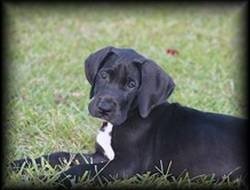
|

|
|
|
| ||
Dog Training and Dogs Behavior ProblemDog Training does not have to be headache. It is simply not necessary to break an animals spirit in order to live together in harmony. Non-Violent Approach To Dog TrainingThe old methods of dog training and other animals by controlling them through domination-in a misguided desire for “absolute obedience”-foster an attitude of human superiority and justified violence, rather than kinship and mutual respect. I believe it is harmful for all of us, and especially for children, to observe and take part in those forms of Dog training. Fortunately, these ways are becoming a thing of the past as they are now being challenged by less harmful methods of establishing control. We are entering a more empathic age and compassionate stage. As people mature, they desire a mutually enhancing relationship with their partners, one of kindness and respect. Likewise, we look for ways to educate our animals with compassion and love, in order to establish a relationship and bond based on mutual affection, understanding, and trust. Much skill, patience, and understanding are needed with animals to establish this bond, this will make dog training much easier and less stressful. Reward based training is the most popular form of training. Reward based training involves the manipulation of what the dog wants to have. It is easier for the average owner and dog to understand. The dog is learning how to ge what he wants and because of that, he wants to learn. Correction Basically there are two ways to train and animal, with physical force and coercion, which is often aversive, or with rewards, which personifies kindness. It is the age-old idea of getting an animal to do something by using a stick or giving her a carrot. The process you use to teach your dogs to sit is as important as the result. The training methods you use are important not only because of what you are doing to your dogs, but also because of what you are doing to your selves as human beings. Dog training, as it is currently practiced by many, is turned upside down. The primary reason people train dogs is to keep them from doing things that come naturally. They want to keep their dogs from using their teeth. They want to keep them from running. They want to keep them from eliminating. They want to keep them from jumping, digging, and barking. It is like putting them in behavioral straitjackets. So what can we do? The goal is to create an environment to let our dogs simply be themselves within the framework of our lifestyle. Nonviolent dog training allows you to create a partnership with your dog using gentle persuasion based in kindness, respect, and compassion. This gentle persuasion is what nonviolent dog training is all about. In this method you use a gentleness with a flexible yet noncompromising attitude. The spoken word is actually full of power-and part of this power is based in the silence before, after, and between the spoken words. Every dog deserves respect. And that respect includes being considerate. You should do your best to find out why a dog is doing what he is doing before responding. Otherwise, it is easy to inadvertently fly off the handle and react in a way that might harm the dog and actually compound the behavioral problem. Reacting blocks respect; responding fosters respect. Also consider that every dog learns at her own pace.There are three ways to nonviolently train your dog:
In nonviolent training, we use three ways to shape behavior: positive reinforcement, negative reinforcement, and negative punishment. Scientifically speaking, a reinforcement, whether positive or negative, increases the likelihood of a behavior being repeated and punishment decreases the likelihood. Positive reinforcement is used the most in nonviolent training. Occasionally some negatives are used in nonviolent training, but only when they do not harm the dog or the human physically, emotionally, or mentally. Positive reinforcement means rewarding behaviors you want your dog to repeat. When your dog performs the sit behavior, reward her for it. Give her a treat ever time she puts her behind on the floor, and there is a good chance she will keep putting her behind on the floor. The Steps to Shaping A Behavior
Reinforcement SchedulesStep 1: A continuous reinforcement schedule. When you begin training for any behavior, it is important to reward you dog each and every time she responds to your signal, e.g., sit, treat, sit, treat, sit, treat, etc. For simple behaviors in a no distracting environment, a few hundred repetitions spread out over several days or weeks may be all that is necessary for you dog to grasp what is going on. You will also revert to this schedule whenever you add duration, distance, or distraction to each behavior. Step 2: A variable reinforcement schedule. At the next stage of training, instead of rewarding the dog after every response, he is rewarded on a predetermined schedule, such as after every second, third, or fourth response (sit, sit, treat,-or sit, sit, sit, sit, treat), or after two, three, or more different behaviors, e.g., sit, down, sit, treat, etc. Step 3: An intermittent or random reinforcement schedule. In this stage, you progress to rewarding every so often, like the occasional win in Las Vegas. Once the dog know that a payoff is coming sooner or later, she will remain motivated. Reference: The Dog Whisperer by: Paul Owens Trainer Abbreviations and There MeaningsABCDT-Animal Behavior College Certified Dog Trainer, Certified by and graduated from Animal Behavior Collage, a dog training program that includes home study and an externship. CAAB-Certified Applied Animal Behaviorist by the Animal Behavior Society. This certification requires supervised graduate training in animal behavioral science from an accredited university. CABC-Certified Animal Behavior Consultant through the International Association of Animal Behavior Consultants. Certified members must pass a review process that includes detailed case studies. CDT-Certified Dog Trainer through the International Association of Canine Professionals Any member of the IACP can take the CDT exam to earn the title, as long as her or she remains a member. DPDT-KA-Certified Pet Dog Trainer, Knowledge Assessed through the Certification Council for Pet Dog Trainers. This independent organization offers proctored exams for dog trainers form any school or program after they achieve at least 300 hours of teaching. KPACTP-A Karen Pryon Academy Certified Training Partner has completed the Academy’s Curriculum. It consists of online study, hands on workshops, and a written examination based on Pryor’s clicker-training method. Table of Contents | Click Here To Visit Kittys Corner  Click Here to Vote for My Site! Click Here to Vote for My Site!
Media Release: APDT Professional Dog Trainers’ Advice for New Dog Owners Most dog trainers experience a rush of new clients at the beginning of every year. Even President-Elect Barack Obama and his family will be welcoming a new arrival soon! Whether you’ve brought home a new puppy or an adult dog, it’s important to start off on the right foot to create a happy and harmonious relationship. The Association of Pet Dog Trainers (APDT) asked their members to provide their top recommendations for new dog owners. Greenville, SC - January 12, 2009 – The Association of Pet Dog Trainers emphasizes the importance of training your new dog right from the start. Training and early socialization are the keys to avoiding behavior problems and easing the transition into your home and family. The importance of early planning when it comes to puppies has been highlighted by the current media buzz around President-Elect Obama’s announcement that he and his family have narrowed down their choice of dog to a Portuguese Water Dog or a Labradoodle. The Association of Pet Dog Trainers (www.apdt.com) asked their members to provide some essential tips to help new owners. Whether you’re the everyday dog owner or our new President, these tips will help you get your relationship with your new dog off on the right paw!
Training the newest member of your family is critical to preventing behavior problems and developing a successful relationship. You can find a qualified trainer in your area using the popular APDT Trainer Search feature at APDT.  
~Kittys Corner~I have a Female Great Dane and her name is Kitty. She will be 2 in July '10. Her mother is a Blue Dane and her dad is a Black Dane. This is a picture of her here and there are lots of pictures of her on this website. This space is called Kittys Corner because when ever I am at my computer working (which is most of the time) Kitty is laying or sitting beside me with her head on my lap. So I made her a corner so she can voice what is going on in her world. ~Enjoy~The weather is so warm and sunny. I was getting tired of the cold and being stuck in the house. Now mom has been back taking me on our walks I missed our walks. Have you been doing anything fun lately? Will you send me your pictures so I can see them? Mom even said something about starting a contest. How fun! So start taking some pictures, or if you already have some, send them in so I can see them. Send in a Picture 
| |
| | ||
Dog Training Beginning Welcome to the World of the Great Dane.This website strives to bring you the latest information on Great Danes. The content is updated often so make sure and bookmark this site so you can keep up to date on the information. Link To UsReturn to top The Content of this Website is intended as General Information and is NOT Professional Advice. | ||
| | ||



